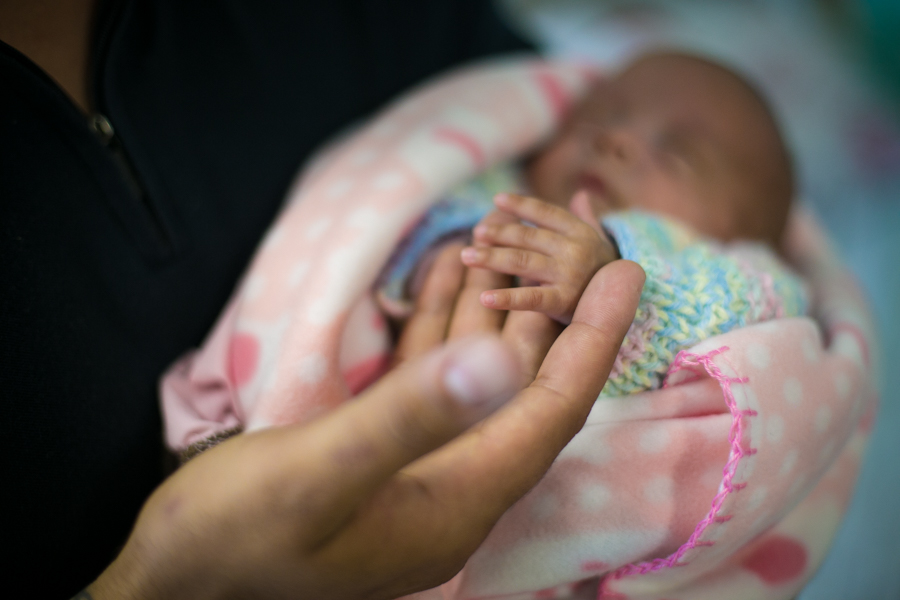The program that helps parents promote the development of their premature babies on a daily basis
Rita de Cássia dos Santos Silveira

After giving birth to a premature baby at about 28 weeks of gestation, a teenager had to be admitted to the hospital due to complications from childbirth. She arrived at the maternity hospital at the age of 15 and left two months later, after turning 16. At first, she was very impatient and withdrawn. While the infant was still in the neonatal ICU, her aunt was responsible for following the instructions for baby care. The father was only 19 years old. Despite the young age of the couple, the baby was very desired. After almost 60 days in the hospital, the family was finally able to take the baby home. On the first visit, weeks later, a team made up of two nurses pulled over in an area of extreme poverty in Greater Porto Alegre. Because of the traffic, the family had to move at least three times. During each visit, interactions between the parents and the baby improved. The mother never stopped looking after the baby. The father was always there, taking pictures. At two years old, the baby is among a group of children who has developed the most and already knows how to count.
This story is made possible by the early stimulation program for premature babies and their parents developed by pediatrician Rita de Cássia dos Santos Silveira, PhD in Child and Adolescent Health from the Federal University of Rio Grande do Sul (UFRGS) and head of the Neonatal ICU of the Hospital de Clínicas de Porto Alegre. To develop the intervention, the team created visually attractive material providing guidance on techniques and stimulation exercises in the hospital and at home, which could be understood and carried out by parents, family members and caregivers of the child from any educational and socioeconomic background. With the materials ready, the researcher randomly assigned 88 premature infants to either receive the stimulation program (intervention group) or receive conventional care (control).
Parents began the program while still in the neonatal Intensive Care Unit (ICU), under the guidance of nurses. Over ten practical sessions, caregivers learned the stimulation exercises that should begin at the hospital, such as affection and systematic touching the baby, and continue at home. Other strategies to implement at home include, for example, shaking a plastic rattle from side to side and assessing whether the child is following, talking near and far from the baby to see if it follows the voice, waving a red or black glove on one hand and white glove on the other to facilitate the perception of colors. Or even, sewing a rattle on the baby’s socks to motivate him to look for the noise and search for the foot, which improves motor development and cognition.
After discharge, a team of trained nurses visited the babies at home. There are ten guidance consultations at the clinic and consequently 10 opportunities to monitor the evolution of their development. And they had to face numerous obstacles to monitor the development of children until they reached two years old. There were many times when they faced blockades due to disputes between drug factions, army interventions and even shootings. “Even so, adherence was high, and we had little loss of babies and mothers in the study,” says Rita. “In addition to parents and caregivers, the program also managed to raise awareness among health agents and professionals about the importance of stimulation for development.”
Throughout the project, the researchers measured the impacts of the program in several areas, including motor, cognitive and emotional (bond between child and caregiver) development. It is the first time that a study has evaluated the effects of a program for preterm infants on their cognitive ability to understand and respond to stimuli.
The first results were noted early on in the hospital. The group of children who received special care from their parents had more interaction than expected in the neonatal ICU and, at eight months, registered a significant improvement in motor skills. At this age, all babies in the study underwent an assessment based on the Bayley scale, an international benchmark for measuring development. About 24 percent of those who received the intervention had child development below average for their age. In the control group, this rate was 54 percent, and children were hospitalized more frequently. The stimuli were effective even among a group of very small (extreme) preterms, who had several complications. During the visits, the researchers noticed better interaction associated with higher rates of breastfeeding and stronger bonds.
“Babies’ interests in learning and their development do not depend on the severity of prematurity and the socioeconomic conditions of the family,” says Rita. “Even in homes without basic sanitation and with multiple children, we observed excellent interactions during the visits, which demonstrates that this is a low-cost intervention that can be successfully implemented in any family context.”

